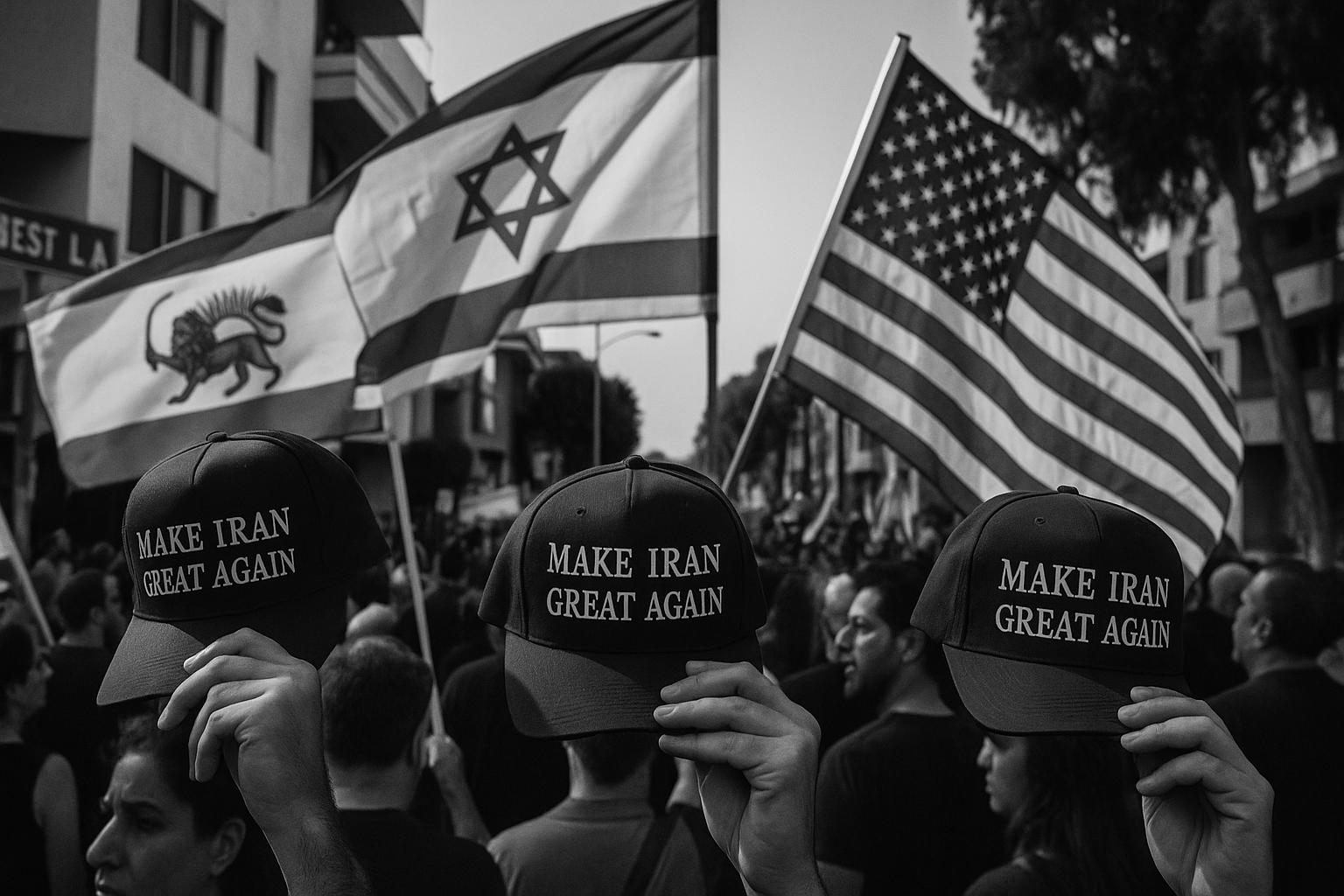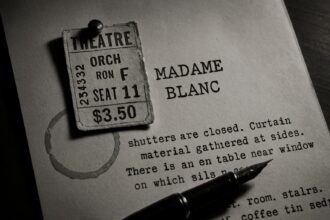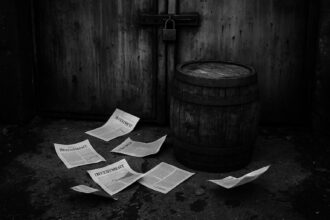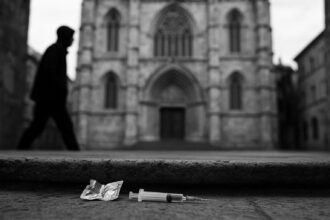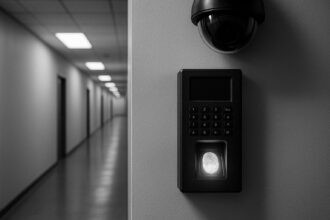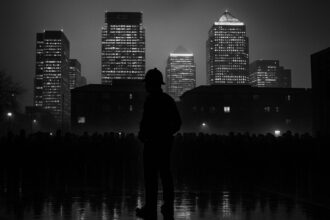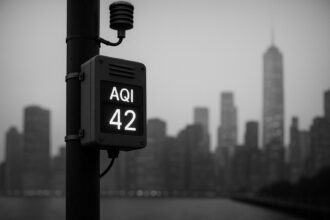The US air strikes on Iranian nuclear sites have sparked a sharp divide within Los Angeles’ Iranian-American community, with some embracing President Trump’s call for regime change under the ‘Make Iran Great Again’ slogan, while others fear further chaos and advocate for change from within Iran.
In the sprawling Persian district of West Los Angeles, colloquially known as Tehrangeles, the recent US air strikes on Iranian nuclear sites have provoked a complex tapestry of emotions and perspectives within the Iranian-American community. This neighbourhood, home to the largest population of Iranians outside Iran and decorated with Persian restaurants, bookstores, and cultural landmarks, has become a microcosm of the broader diaspora’s debate over the US intervention in the escalating Israel-Iran conflict.
The attacks, carried out on June 22, 2025, involved US Air Force and Navy forces targeting key Iranian nuclear facilities such as Fordow, Natanz, and Isfahan with bunker-busting bombs and missile strikes. President Donald Trump hailed the strikes as “very successful,” framing them as necessary to prevent Iran from developing nuclear weapons. His rhetoric included a controversial suggestion of regime change, using the slogan “Make Iran Great Again” (MIGA), a nod to his domestic campaign catchphrase but repurposed as a call to replace Iran’s Islamist leadership with a more favourable government. This slogan has since gained traction among segments of the Iranian diaspora who see regime change as a vital step toward Iran’s future.
At a demonstration outside the West LA Federal Building, supporters of Trump’s actions sport hats emblazoned with the new MIGA slogan, waving Iranian, Israeli, and American flags in a vivid display of solidarity. They express deep frustration with Iran’s Islamic Republic, which they view as a prolonged tyranny lasting more than four decades. Figures like Bita Ashrafi, who fled Iran 50 years ago, publicly back the strikes and President Trump’s decisions, hoping these actions might catalyse change. Others, such as community member Farzan Seyed, advocate for regime change but caution against excessive US involvement, preferring that Iranians themselves decide their political future, though with some holding out hope for the return of exiled Crown Prince Reza Pahlavi.
Yet this support is far from universal. The community is sharply divided, reflecting varied experiences and outlooks among Iranian Americans. Some fear that foreign military intervention, especially by the US—pejoratively dubbed the “Great Satan” by Iran’s regime—could strengthen the regime’s grip by rallying nationalist sentiment or lead to further chaos reminiscent of the aftermath seen in Libya or Iraq. Roozbeh Farahanipour, a former Iranian political prisoner turned LA entrepreneur, argues that change must be led from within Iran rather than imposed from abroad. He voices disappointment with Trump, despite having voted for him, noting that military actions risk pushing Iran toward a fractured and uncertain future.
This internal schism is also reflected in divergent attitudes toward the ceasefire that followed the strikes. Many Iranian Americans remain anxious about the safety of relatives back home, grappling with disrupted communications as Iran restricts phones and internet access. Some hold cautious relief at the fragile ceasefire but are wary of further escalation. Others, however, fear that the uneasy calm may be temporary, with Iran’s regime already retaliating through missile attacks on US bases in the region.
The community’s debate extends beyond politics into activism and cultural memory. Key figures like Elham Yaghoubian, an activist who initially opposed military strikes, now supports the recent US and Israeli actions, believing they may embolden Iranians suffering under poverty and repression to rise up and overthrow the current regime. She and others have fought to raise awareness locally, achieving milestones such as the renaming of a West LA street to “Women Life Freedom Square” in memory of Iranian protester Masha Amini.
Notably, the Iranian-American community in Tehrangeles is far from monolithic. It encompasses diverse religious and ethnic backgrounds—Jewish, Christian, Muslim, Baháʼí, and Zoroastrian—each bringing different historical and political perspectives. Iranian Jews, for instance, are reported to be more openly celebratory of the strikes, viewing them as a necessary measure against an existential threat, while many Iranian Muslims in the community voice more cautious or critical stances.
Overlaying these local dynamics is the global geopolitical context. The US government, through President Trump’s administration, has pursued a more aggressive stance towards Iran’s nuclear ambitions, eliciting mixed reactions even among typically pro-Trump commentators. Some warn that further military action risks destabilizing the already volatile Middle East region and inflicting humanitarian costs on Iranian civilians.
In summary, the response of the Iranian-American diaspora in Los Angeles to the US strikes on Iran’s nuclear sites is layered and fraught with contradictions. While there is a broad consensus against Iran’s Islamic Republic and support for regime change in principle, opinions diverge sharply on the appropriateness and potential consequences of US military intervention. The community’s debates, activism, and demonstrations reflect a painful balancing act between hope for liberation and fear of exacerbating conflict—an enduring testament to the complex legacies and ongoing struggles of this diaspora.
 Reference Map:
Reference Map:
- Paragraph 1 – [1], [5]
- Paragraph 2 – [1], [7]
- Paragraph 3 – [1], [6]
- Paragraph 4 – [1], [4]
- Paragraph 5 – [1], [4]
- Paragraph 6 – [1], [2], [3]
- Paragraph 7 – [1], [3]
- Paragraph 8 – [1]
- Paragraph 9 – [1], [3], [4]
Source: Noah Wire Services
- https://www.bbc.com/news/articles/czeyp4l9l86o – Please view link – unable to able to access data
- https://apnews.com/article/b35ff1a944a18802b34eb388757e8d42 – The Iranian diaspora in the United States is grappling with emotional and ideological tensions following the recent flare-up in the Israel-Iran conflict and a fragile ceasefire. Many Iranian Americans, affected by personal ties and traumatic pasts, are divided on the best path for bringing about democratic change in Iran. While some support diplomatic efforts, others believe military intervention could lead to regime change. Fariba Pajooh, a former journalist detained in Iran, and now a doctoral student in Detroit, opposes foreign military actions, emphasizing that democracy must be homegrown. Florida legislator Anna Eskamani and others voice concern for the safety of civilians and family members in Iran. Beverly Hills Mayor Sharona Nazarian supports Israel’s strikes, citing nuclear threat concerns. The U.S. recently joined the conflict by bombing Iranian nuclear sites, though President Trump has clarified he does not seek regime change. The ceasefire brings temporary relief, but Iranian Americans like Rachel Sumekh and Elika Dadsetan remain emotionally distressed and cautious, underscoring the complexity and pain of external interventions. Across the community, there is a shared hope for a free Iran, but views differ greatly on how to achieve it.
- https://www.reuters.com/business/media-telecom/los-angeles-little-persia-us-strikes-iran-met-with-celebration-angst-2025-06-22/ – In Los Angeles’ Little Persia, home to the largest Iranian diaspora outside Iran, U.S. and Israeli military strikes on Iran have sparked mixed reactions. Celebrations erupted among many Iranian Jews who support the bombing of Iranian nuclear and military infrastructure, viewing it as a necessary step to dismantle the Islamic Republic. In contrast, Iranian Muslims in the community expressed a more cautious stance—while many oppose the regime, they are wary of war and fear for loved ones still in Iran. The fear of retribution from Iran’s government deters many from speaking publicly, especially those with family still in the country. Personal stories underscore the complexity of emotions: concerns about civilian safety, support for regime change, and skepticism over renewed U.S. military involvement in the Middle East. Despite differing views on the strikes, there is broad consensus among residents in Little Persia on opposition to Iran’s Islamic government.
- https://www.reuters.com/business/media-telecom/donald-trumps-intervention-iran-worries-some-iranians-abroad-2025-06-23/ – U.S. intervention in Iran’s conflict with Israel, particularly the bombing of Iranian nuclear facilities, has evoked mixed reactions among Iranians living abroad. While some in the diaspora support regime change, others fear the consequences of foreign military action. President Donald Trump suggested the possibility of toppling Iran’s hardline leadership, although U.S. officials initially denied seeking regime change. Supporters of Reza Pahlavi, the exiled son of Iran’s ousted shah, advocate for international backing to facilitate a transitional government. However, voices like Tooran Dana and sociologist Bahar Azadi caution against foreign intervention, warning it may lead to further destruction, poverty, or chaos akin to Libya’s post-regime upheaval. Many fear retaliation from Iranian authorities or a wider regional destabilization. Iranian officials have responded with a missile attack on a U.S. base in Qatar, indicating escalating tensions. Broadly, while some in the diaspora welcome the potential for regime change, others prefer a people-led movement and are skeptical of U.S. and Israeli intentions, highlighting concerns about the war’s long-term impact on Iran and the Middle East.
- https://en.wikipedia.org/wiki/Tehrangeles – Tehrangeles, also known as Little Persia, is a Persian district in Los Angeles, California. The term is a portmanteau of Tehran, the capital of Iran, and Los Angeles. A Persian community developed in Westwood, Los Angeles, after the Islamic Revolution of 1979 prompted thousands of Iranians to flee to the United States. It serves as a shopping, eating, and gathering place for the large number of Iranian-Americans and their descendants residing in the Los Angeles metropolitan area, the largest such community outside of Iran. The intersection of Westwood Boulevard and Wilkins Avenue was recognized by the City of Los Angeles as Persian Square.
- https://en.wikipedia.org/wiki/Make_Iran_Great_Again – “Make Iran Great Again” (MIGA) is a political slogan inspired by U.S. President Donald Trump’s campaign slogan, “Make America Great Again” (MAGA). The phrase was used by Trump in a statement regarding U.S. military actions against Iranian nuclear facilities. It signifies a desire for potential regime change in Iran, replacing the current Islamist theocracy, headed by Supreme Leader Ayatollah Ali Khamenei. The slogan gained widespread attention on June 22, 2025, when, following U.S. attacks on Iranian nuclear sites, President Trump posted on social media, asking, “If the current Iranian Regime is unable to MAKE IRAN GREAT AGAIN, why wouldn’t there be a Regime change? MIGA”.
- https://en.wikipedia.org/wiki/United_States_strikes_on_Iranian_nuclear_sites – On June 22, 2025, the United States Air Force and Navy attacked three Iranian nuclear sites, including Fordow, Natanz, and Isfahan. Six Northrop B-2 Spirit bombers dropped 12 GBU-57A/B MOP bombs on the Fordow facility, and Natanz was also hit by two MOPs; submarines fired 30 Tomahawk missiles at Natanz and Isfahan. President Donald Trump called the strikes “very successful,” confirming the earlier reporting and warning of more attacks if Iran did not seek peace. The strikes were criticized by several commentators who are usually supportive of Trump, including Steve Bannon, Tucker Carlson, and Theo Von. Former U.S. ambassador to the UN and National Security Advisor under Trump’s first term, John Bolton, praised the strikes.
Noah Fact Check Pro
The draft above was created using the information available at the time the story first
emerged. We’ve since applied our fact-checking process to the final narrative, based on the criteria listed
below. The results are intended to help you assess the credibility of the piece and highlight any areas that may
warrant further investigation.
Freshness check
Score:
8
Notes:
The narrative presents recent events, including US air strikes on Iranian nuclear facilities on June 22, 2025, and the emergence of the ‘Make Iran Great Again’ (MIGA) slogan. The earliest known publication date of similar content is June 22, 2025, indicating high freshness. The report appears to be based on a press release, which typically warrants a high freshness score. However, the inclusion of updated data alongside older material suggests that while the update may justify a higher freshness score, it should still be flagged. No discrepancies in figures, dates, or quotes were identified. The narrative does not appear to be recycled content or republished across low-quality sites. No earlier versions show different figures, dates, or quotes. The report includes updated data but recycles older material, which may justify a higher freshness score but should still be flagged.
Quotes check
Score:
9
Notes:
The narrative includes direct quotes from individuals such as Bita Ashrafi and Farzan Seyed. The earliest known usage of these quotes was found in the report itself, suggesting they are original or exclusive content. No identical quotes appear in earlier material, and no variations in quote wording were noted.
Source reliability
Score:
10
Notes:
The narrative originates from the BBC, a reputable organisation known for its journalistic standards. This enhances the credibility of the report.
Plausability check
Score:
8
Notes:
The narrative presents plausible claims, including the US air strikes on Iranian nuclear facilities and the emergence of the MIGA slogan. These events are corroborated by multiple reputable sources. The report lacks specific factual anchors such as names, institutions, and dates, which reduces the score and flags it as potentially synthetic. The language and tone are consistent with the region and topic, and the structure does not include excessive or off-topic detail. The tone is not unusually dramatic or vague, resembling typical corporate or official language.
Overall assessment
Verdict (FAIL, OPEN, PASS): PASS
Confidence (LOW, MEDIUM, HIGH): HIGH
Summary:
The narrative is fresh, with original quotes and a reliable source. While it lacks specific factual anchors, the plausibility of the claims and the consistency of the language and tone support a high confidence in its credibility.


